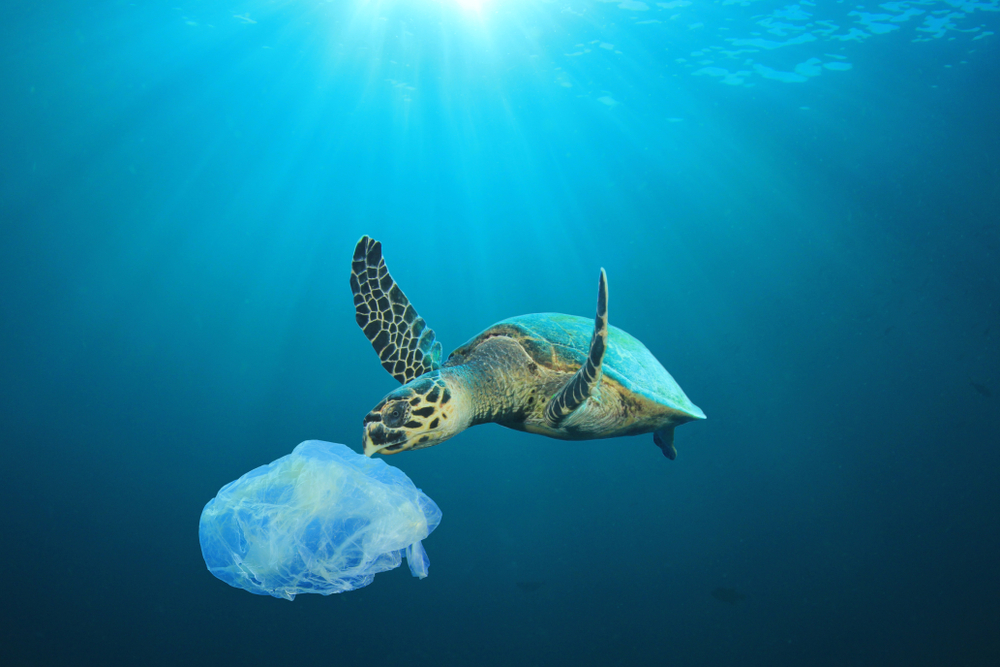Great Pacific garbage patch $20m cleanup fails to collect plastic
Engineers at the Ocean Cleanup project are working on a fix to stop collected debris leaking back out from the 600m barrier
A giant floating barrier launched off the coast of San Francisco as part of a $20m project to cleanup a swirling island of rubbish between California and Hawaii, is failing to collect plastic.
The mastermind behind the Ocean Cleanup, an ambitious plan to clear a swathe of the Pacific twice the size of Texas of floating debris, reported four weeks into testing that while the U-shaped device was scooping up plastic, it was then losing it.
Inventor Boyan Slat, 24, said that the slow speed of the solar-powered 600m-long barrier means it is unable to hold on to plastics, but a team of experts is now working on a possible fix.
“What we’re trying to do has never been done before. So, of course we were expecting to still need to fix a few things before it becomes fully operational,” Slat explained.
A crew of engineers will work for the next few weeks to widen the span of the floating barrier so that it catches more wind and waves to help it go faster, he said.
The marine apparatus known as System 001, or ‘Wilson’, was towed out to the area known as the Great Pacific Garbage Patch in September, after Slat’s team of 70 scientists and engineers spent five years testing 273 models and six prototypes.
Slat posted images on social media of the first contact the barrier had with plastic waste after becoming operational in October.
But in an update this week the team said the challenge of the device not retaining plastic had not been predicted from scale models and prototypes.
A statement on Tuesday said: “Eventually the only way to truly see how the system would perform was to put it in the environment it has been designed for, and this application has been largely effective, since most of the design has withstood the tests of the Pacific, such as its ability to accumulate plastic, reorient with the wind and survivability. For the beta phase of a technology, this is already a success.”
A crew will now perform new tests and collect additional data to explore the root cause of the issue.
A status update on the Ocean Cleanup website explained potential causes to the glitch. It said: “Wilson might be having greater impact on the currents carrying the plastics than initially predicted.
“It looks as though various current effects are resulting from the system’s behaviour in the water. For instance there has been observed a stagnation effect where small patches of plastic are driven around Wilson and accumulate on the exterior of system.”
The plastic barrier with a tapered three-meter-deep ‘skirt’ is intended to act like a coastline, trapping some of the 1.8tn pieces of plastic that scientists estimate are swirling in the patch, while allowing marine life to safely swim beneath it.
Fitted with solar-powered lights, cameras, sensors and satellite antennas, the device is designed to communicate its position at all times, allowing a support vessel to fish out the collected plastic every few months and transport it to dry land for recycling.
Slat said he expects shipping containers filled with fishing nets, plastic bottles, laundry baskets and other plastic trash scooped up by the system to be back on land within a year.
Researchers claim the project could remove 50% of plastics in the area within five years but others remain sceptic, with some scientists even claiming Wilson could pose a threat to marine life.
Miriam Goldstein, the director of ocean policy at the Centre for American Progress, told The Guardian: “Even if the Ocean Cleanup starts to collect plastic, I remain concerned about its effect on the ecosystem, especially if they scale up to 60 devices as Boyan Slat has said.
“Their environmental impact assessment did not seriously address the effects of these large-scale structures on endangered animals such as sea turtles, on commercially important fish such as tuna, or on the animals that live by floating on the sea surface.”
Goldstein added: “They have also never addressed how they will deal with fouling, which is when animals such as barnacles grow directly on the device, adding a huge amount of weight and drag. A solution is not a solution if it does more environmental harm than good.”
Others claim efforts would be better focused on the root cause of plastic waste.
George Leonard, chief scientist of the Ocean Conservancy, a nonprofit environmental advocacy group, said a solution must include stopping plastic from reaching the ocean in the first place, and educating people to reduce consumption of single-use plastic containers and bottles.
Slat agreed that preventing more plastic from entering the ocean is part of the solution but said something needs to be done about what’s already there.
“This plastic doesn’t go away by itself, and to just let hundreds of thousands of tonnes of plastic out there to be fragmented into these small and dangerous microplastics to me seems like an unacceptable scenario,” he said.

